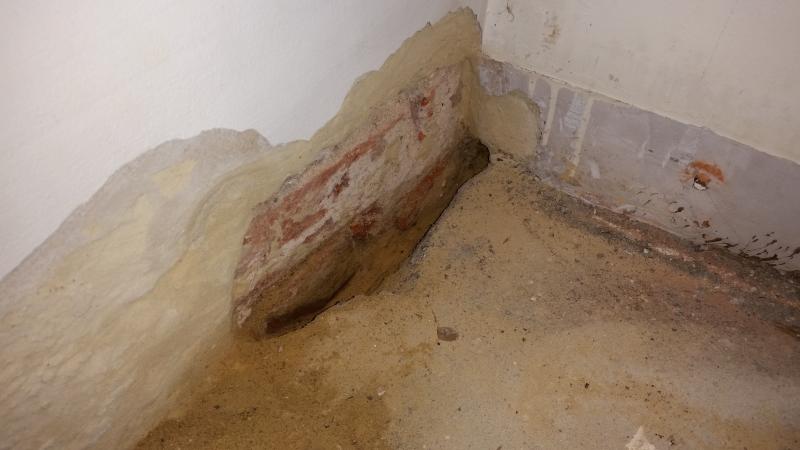I'm starting to do some renovation work in the living room of my 1820's cottage. The construction is basically a concrete floor slab and double thickness brick walls with no air gap in between. However, I have noticed that in some areas the concrete slab goes all the way to the brickwork, but in other areas the plastering goes below the level of the concrete floor, as if the walls were plastered first and then the concrete slab added. I suspect that the floor has possibly been re topped at some point after the plastering. Which of these methods is correct, and does it actually make any difference.



